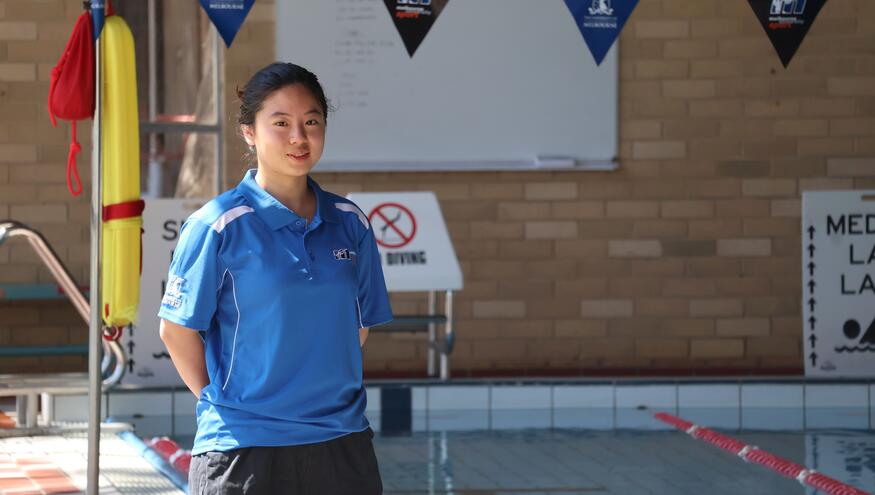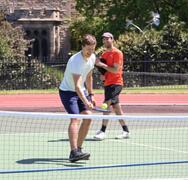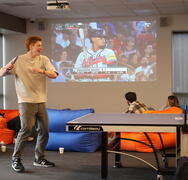December 01; Mrinal Asija
Swimming and water activities are an integral part of the Australian lifestyle and most locals are taught the skill early in their childhood. However, this is not the case for a lot of students who grew up overseas.
To help its cohort of international students learn this essential life skill, the University of Melbourne started the free Water Safety Program in partnership with Life Saving Victoria in 2017. The 10-week-long program consists of a 30-minute lesson from qualified staff each week, in which students are taught necessary water safety and survival skills and basic formal strokes to help them safely participate in water-based activities at the pool and beach.
While the program is primarily aimed at students who have not previously had the opportunity to receive swimming training, it is also open to those who want to develop their water safety skills further. Yuetong Wang, a third year Bachelor of Biomedicine student from China, had learnt artistic swimming in primary school but joined this program as she thought some of her strokes needed improvement. She enjoyed it so much that she decided to become an instructor at the University. After finishing the program, Yuetong obtained a swim teacher certification from Life Saving Victoria, which required learning to perform CPR and first aid in addition to swimming skills. She also learnt teaching techniques from experienced coaches.
In the program, students are taught the four conventional swimming styles (freestyle, backstroke, breaststroke, butterfly) as well as water safety techniques like the survival backstroke. The lessons are tailored to the individual needs of the students.
Yuetong ensures that she asks each student about the level of their swimming skills and their goals before starting the lessons and plans for different levels differently. “Usually for beginners, I start with breathing and simple kicking and then advance to freestyle, backstroke, and breaststroke. For advanced swimmers, I usually let them start with practicing freestyle. I give them some technical guidance such as side breathing and paddling. Then we move on to backstroke and breaststroke. At the end of the program, I also teach backstroke and tumble turn if students want to learn. But whether students are beginners or advanced swimmers, I spend some time teaching floating and survival backstroke, so that they can keep themselves safe in the water in an easy and effortless way,” she said, explaining her teaching process.
For Yuetong, building trust with her students and ensuring that they enjoy the lessons is crucial. “Patience is important. Some students are afraid of water. Instructors need to be patient and help them overcome difficulties slowly,” she said, stressing upon the importance of good communication.
“Whether you have learned to swim or not, don’t worry! This project is suitable for students at different levels,” Yuetong said, when asked why University students should join the program. “The great thing is, it’s free! Outside of swimming lessons, students also have free access to the pool. They can come to swim and practice on their own at any time. And there is a chance to go to the beach at the end of the semester. I participated twice and I had a lot of fun! In addition, this is also a good opportunity to make more friends. I highly recommend students to participate in this program, you will gain a new skill and a precious experience!”
Program includes:
- Tailored swimming lessons from qualified staff
- MU Sport and University of Melbourne branded swimming goggles and cap
- Unlimited pool access outside lesson times
- Beach safety education seminar
- Practical beach excursion






